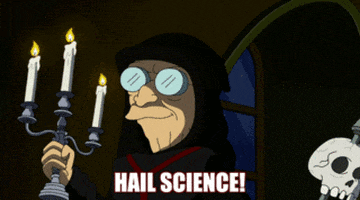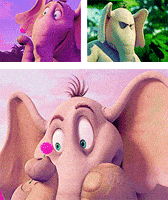Navigation
Install the app
How to install the app on iOS
Follow along with the video below to see how to install our site as a web app on your home screen.
Note: This feature may not be available in some browsers.
More options
You are using an out of date browser. It may not display this or other websites correctly.
You should upgrade or use an alternative browser.
You should upgrade or use an alternative browser.
Science Lounge
- Thread starter dcf2
- Start date
- Replies: 140
- Views: 7K
- Off-Topic
an0maly
Distinguished Member
- Messages
- 315
This is along the lines of what I take to be a far bigger accomplishment, from earlier this year. One cubic millimeter of the human brain mapped, that's 1.4 petabytes of data, charting 150 million synaptic connections.Published in several papers in Nature this week - A new largest animal brain map.
140,000 cell and more than 50 million synapses have been physically mapped in fruit fly - like a wiring diagram. More than 8,000 different types of neurons have been described including thousands of new types.

A complete wiring diagram of the fruit-fly brain
A connectomic map of the entire fly brain.www.nature.com
also
Codex
codex.flywire.ai
Twelve thousand more or so and we are all done with a whole human brain.

Ddseddse
Iconic Member
- Messages
- 1,169
There are 1000 cubic millimeters in a cubic centimeter... 1.2 Million or so to go (by my calculations)...

- Messages
- 1,755
I agree. I hope I live long enough to see humans reach the surface of Mars, but I doubt I will. But, and there's always a "but" with me, how much more money and time would it have taken to have people replicate what we have learned about Mars from the rovers? I am really glad the enormity of putting a human on Mars helped shape US space policy towards the rover route. Had we gone the "Man on Mars" route, I'm not sure we would have succeeded yet and I am certain we would have spent orders of magnitude more money for far less information.Inject Mars Rover stories into my veins. Can't get enough.
- Messages
- 1,260
Hassabis is Google Deep Mind not OpenAI, no?ChatGPT won the Nobel Prize for Physics.
- Messages
- 1,341
My gawd looks like a nerd thead I have no business in! That said which is it chicken or egg.
- Messages
- 1,260
Gift link on getting some comet action:

 www.nytimes.com
www.nytimes.com

How to See the ‘Once-in-a-Lifetime’ Comet Flaring in Our Night Skies (Published 2024)
Comet Tsuchinshan-ATLAS is nearing Earth and getting brighter.
- Messages
- 3,441
Is there a chance it will hit Mar-a Lago?Gift link on getting some comet action:

How to See the ‘Once-in-a-Lifetime’ Comet Flaring in Our Night Skies (Published 2024)
Comet Tsuchinshan-ATLAS is nearing Earth and getting brighter.www.nytimes.com
Nature Editorial:
As Kamala Harris and Donald Trump face off, the fate of US democracy, science and evidence-based policy hangs in the balance.

 www.nature.com
www.nature.com
Like all elections, the 5 November vote is about much more than science. However, the fate of scientific research, evidence-based lawmaking and the government’s receptiveness to independent science-policy advice will be key determinants of the country’s future course and long-term well-being. And, as we reported in a News Feature on 23 October (Nature 634, 770–774; 2024), US science could be at an inflection point: the election and a range of domestic and global forces could challenge the primacy that the country has held since the Second World War.
As Kamala Harris and Donald Trump face off, the fate of US democracy, science and evidence-based policy hangs in the balance.

The world needs a US president who respects evidence
As Kamala Harris and Donald Trump face off, the fate of US democracy, science and evidence-based policy hangs in the balance.
Like all elections, the 5 November vote is about much more than science. However, the fate of scientific research, evidence-based lawmaking and the government’s receptiveness to independent science-policy advice will be key determinants of the country’s future course and long-term well-being. And, as we reported in a News Feature on 23 October (Nature 634, 770–774; 2024), US science could be at an inflection point: the election and a range of domestic and global forces could challenge the primacy that the country has held since the Second World War.
New study in Nature - the Gut Microbiome can be shared across a social network. Your friends and coworkers may be making you sick and fat in more ways than you initially thought. Enjoy those holiday parties.

 www.nature.com
www.nature.com
The amount of strain-sharing seems to be modulated according to the nature of the social relationships, even after accounting for other measured attributes (such as diet and medications). More intimate relationships share more strains, and strain-sharing rates increase monotonically based on the frequency with which a pair of people shares meals or free time together. The strain-sharing rate was the strongest predictor of social relationships, beyond socio-demographic features such as wealth, religion or education.

Gut microbiome strain-sharing within isolated village social networks - Nature
An investigation into the relationship between network structure and gut microbiome composition among people living in 18 isolated Honduras villages reveals that strain-sharing can be mediated by complex, village-wide social interactions.
The amount of strain-sharing seems to be modulated according to the nature of the social relationships, even after accounting for other measured attributes (such as diet and medications). More intimate relationships share more strains, and strain-sharing rates increase monotonically based on the frequency with which a pair of people shares meals or free time together. The strain-sharing rate was the strongest predictor of social relationships, beyond socio-demographic features such as wealth, religion or education.
Milk and Cookies
Distinguished Member
- Messages
- 475
Kind of like having a pool water testing strip tattooed on your arm, but if it works seems better than constantly pricking yourself.
When it comes to diabetics, the popular technology now is attaching a sensor about the size of a quarter to your upper tricep that sends continuous real-time glucose readings to a phone app eliminating the need to prick your finger. Really cool advancement.
Interesting study in Cell - using Fitbit data as continuous factors for genetic association studies of psychiatric disorders.
Should be open access:
Digital phenotyping from wearables using AI characterizes psychiatric disorders and identifies genetic associations https://www.cell.com/cell/fulltext/S0092-8674(24)01329-1
Here, we analyze wearable and genetic data from the Adolescent Brain Cognitive Development (ABCD) study. Leveraging >250 wearable-derived features as digital phenotypes, we show that an interpretable AI framework can objectively classify adolescents with psychiatric disorders more accurately than previously possible.
Should be open access:
Digital phenotyping from wearables using AI characterizes psychiatric disorders and identifies genetic associations https://www.cell.com/cell/fulltext/S0092-8674(24)01329-1
Here, we analyze wearable and genetic data from the Adolescent Brain Cognitive Development (ABCD) study. Leveraging >250 wearable-derived features as digital phenotypes, we show that an interpretable AI framework can objectively classify adolescents with psychiatric disorders more accurately than previously possible.
Share:



